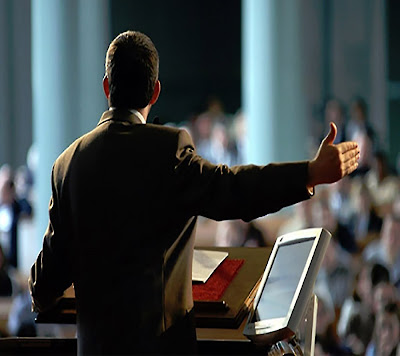Public Speaking Tip: Is Your Body Telling a Different Story?
Body language plays an important role in your speech. They help to drive home a point in a way that
is more impactful than mere words can do.
However, while your body is very useful as a visual
tool , it can be a double edged sword because if your body language
contradicts what you are saying, then your message will be lost in translation.
This does not only apply for public speaking, but
also in smaller scale interactions. If
you say something you don’t mean, there will be small telltale signs that give
you away. People who don’t know you that
well may not be able to see it, but those who are observant or who have known
you for a long time will pick it up.
In fact, the science of interpreting body language is so
important that even people in Human Resource have been encouraged to learn
something about it so that they can weed out the competent candidates from
those not suitable for the job.
That’s why there is an assignment speech in the Competent
Communicator Manual devoted to body language.
It is CC5, Your Body Speaks.
The speech objectives are:
- Use stance, movement gestures, facial expressions, and eye contact to express your message and achieve your speech’s purpose.
- Make your body language smooth and natural.
Based on the above, it is easy to see where the key areas
you need to pay attention to are.
Movement gestures – are you hyper excited or totally still? Gestures are very useful in getting your point across however over gesturing is just too distracting. At the same time, standing still, being devoid of any movements makes you very boring.
Facial expressions – nothing gives you away faster than your facial expressions, unless you've mastered the poker face. It doesn’t matter if your speech is exciting and you talk about interesting things. If your face has no expressions, or worse still, look bored, then the impact is lost. If all else fails, SMILE.
Eye contact – you'd be surprised to know how many people find it extremely awkward to maintain eye contact, even in a one to one interaction. Eye contact is so important to make people feel that you see them and are paying attention to them. If you are addressing a room full of audience, look from one end of the room to the other. Obviously you can’t look at all everyone in the audience but dividing your attention to each corner of the room will help them feel like they are not left out.
And finally, make your body language smooth and
natural. We get it – with so many points
to be aware of, it may feel like you have to put on an act.
Our advice is DON’T!
Go with your natural inclinations. Practice in front of the mirror or with some
close friends who can give you points of improvements.
You may feel self-conscious about using your hands too much. So tone it down but not to the point that you
feel tied up during your speech.
You will not get it right the first time, but listen to your
evaluators and incorporate their points for improvements and you will develop
your personal style with time.




Comments
Post a Comment